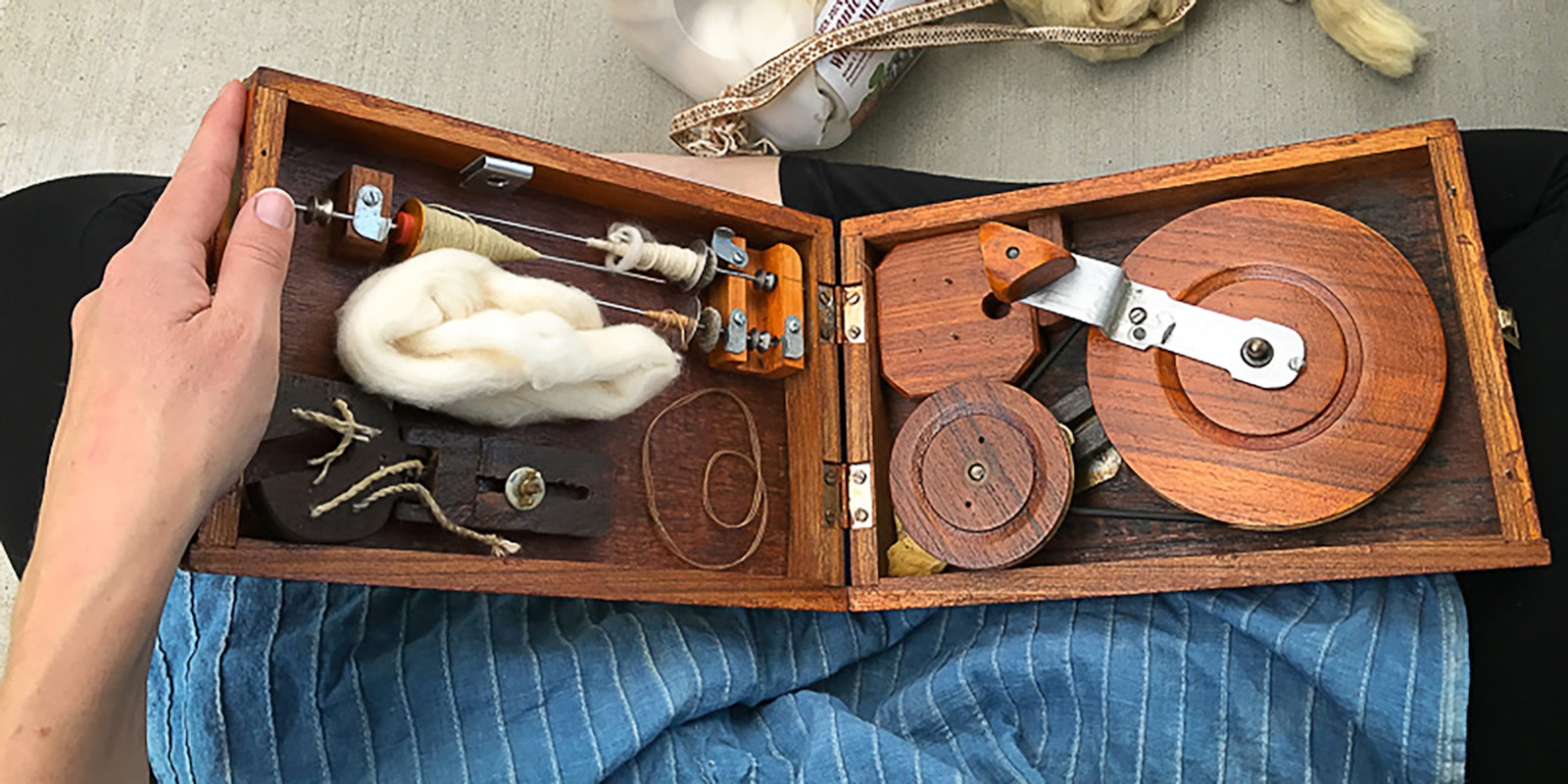Part of the mindful act of charkha spinning for me is slowly winding my singles into a tidy spindle cop. (A cop is the pile of spun yarn that builds on the spindle shaft.) I see some charkha spinners wind their cops like many people wind a Russian spindle, which you can see on the cover of Amelia Garripoli’s Supported Spindle Spinning video.
I prefer to wind a cone-shaped cop that leaves more room along the spindle shaft during spinning. A tidy cop is not all aesthetics—it can make winding on and off so much easier. They might look tiny but, my charkha spindles hold about 150 yards. Plying or rewinding that many yards of tangled singles is tedious, as most of us know from experience! I’ll show you what works best for me and give you a few tips for smoothing your path.
Kate’s Tidy Cotton Cops
 Four Steps for a Perfect Charkha Spindle Cop
Four Steps for a Perfect Charkha Spindle Cop
1. When I remove the yarn from a spindle, I never wind it all off.
Leaving a little bit on the spindle makes it easier to start the next time. Simply lay the end of the remaining handspun single into your cotton fiber and start adding twist. Next, I wind a small layer of new singles about half with length of the finished cop. My spindles are about 4½" long from yarn stop to tip, and my cops tend to be about 2½", so this first layer of singles is just over an inch long.
2. Next, I start winding.
I wind a small pile of singles that leans against the yarn stop (a small, metal disk that sits on the spindle shaft) until I have a small cone of yarn. I can fit quite a lot on my spindle if I always wind the singles perpendicular to the spindle shaft—no need to do much zig and zagging as you might with a drop spindle. The layer or singles added in step one prevents those added on top from moving and slipping down the spindle shaft.
3. Once I have a nice little cone, I extend the base layer.
These base layers not only prevent the singles from sliding as the cop builds, but they help me reduce breakage later. Here’s how: when winding or plying the singles off later, the smaller the diameter of the cop, the faster it must rotate to keep the same pace. Charkha spindles have such a thin shaft that I am more likely to break the fine singles as they wind off if they unwind from the wide base of the spindle cop (rotating slower) and shift suddenly to the top where it is narrow (rotating faster). The sudden change can snap delicate singles. It seems a small thing, but it helped me quite a lot!
4. Repeat Steps 2 and 3, adding another layer to the cone-shaped cop.
 About 150 yards of moderate-twist organic pima cotton singles
About 150 yards of moderate-twist organic pima cotton singles
Here’s my idea of a perfect charkha cop. I’ve tried making cops that are bigger in diameter or extend farther down the spindle shaft, but they don’t work as well for me. Because I typically ply my cotton singles for warp-faced weaving, I wind these charkha spindles onto cardboard pirns and ply them on a spinning wheel. You can see a picture of the winding process here.
Are you just getting started on the charkha or would you like to refine the knowledge you have? Check out Kate’s latest course How to Spin on a Charkha.
Kate Larson is the editor of Spin Off and spends as many hours as life allows in the barn with her beloved flock of Border Leicesters.
Originally published June 18, 2018; updated August 15, 2022.

